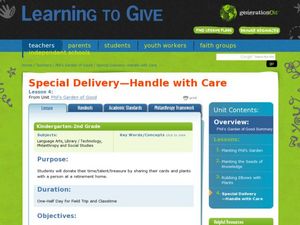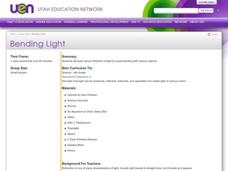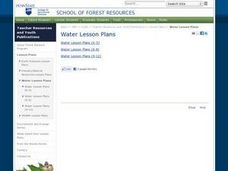Curated OER
What's The World Made Of?
Second graders identify the three states of matter by examining fishbowls with various contents. They discuss their observations and the characteristics of matter in each state. Pupils read the story The Rainbow Fish and look for...
Curated OER
Phil's Garden of Good
Learners read "The Rainbow Fish" and discuss how the fish benefited by giving others. In this sharing lesson, students prepare plants and letters for senior citizens. Learners present their letters and plants at a visit to a senior...
Curated OER
Bending Light
Sixth graders read Hatchet by Gary Paulsen, discuss refraction, identify example of it from novel, and perform classroom experiments demonstrating refraction and reflection.
Curated OER
Ecosystem Vocabulary
In this ecosystem worksheet, students read descriptions and match the appropriate vocabulary term using ecosystem, habitat, community, and population. Students identify ten vocabulary terms.
Curated OER
Ocean -- Under The Sea
Students participate in hands-on activities dealing with what lives in the ocean. They also read literature about the oceans.
Curated OER
These Lakes are Great
Young scholars examine the Great Lakes Basin and water conservation. In this Great Lakes and water lesson plan, students study the location of the lakes before reading the book, The River Ran Wild. They discuss the associated vocabulary...
Curated OER
Great Barrier Reef
Ninth graders read text imbedded in this plan and find the answers to 3 questions: Why is the Great Barrier Reef one of the natural wonders of the world? What value does the reef offer Australia's economy? How is the reef being damaged?
Curated OER
"Pennsylvania Watersheds, Many Ways to the Sea"
Students trace a molecule of water through the water cycle including each of its three loops. They describe why evapotranspiration demands the largest portion of total precipitation falling on a forested watershed.









